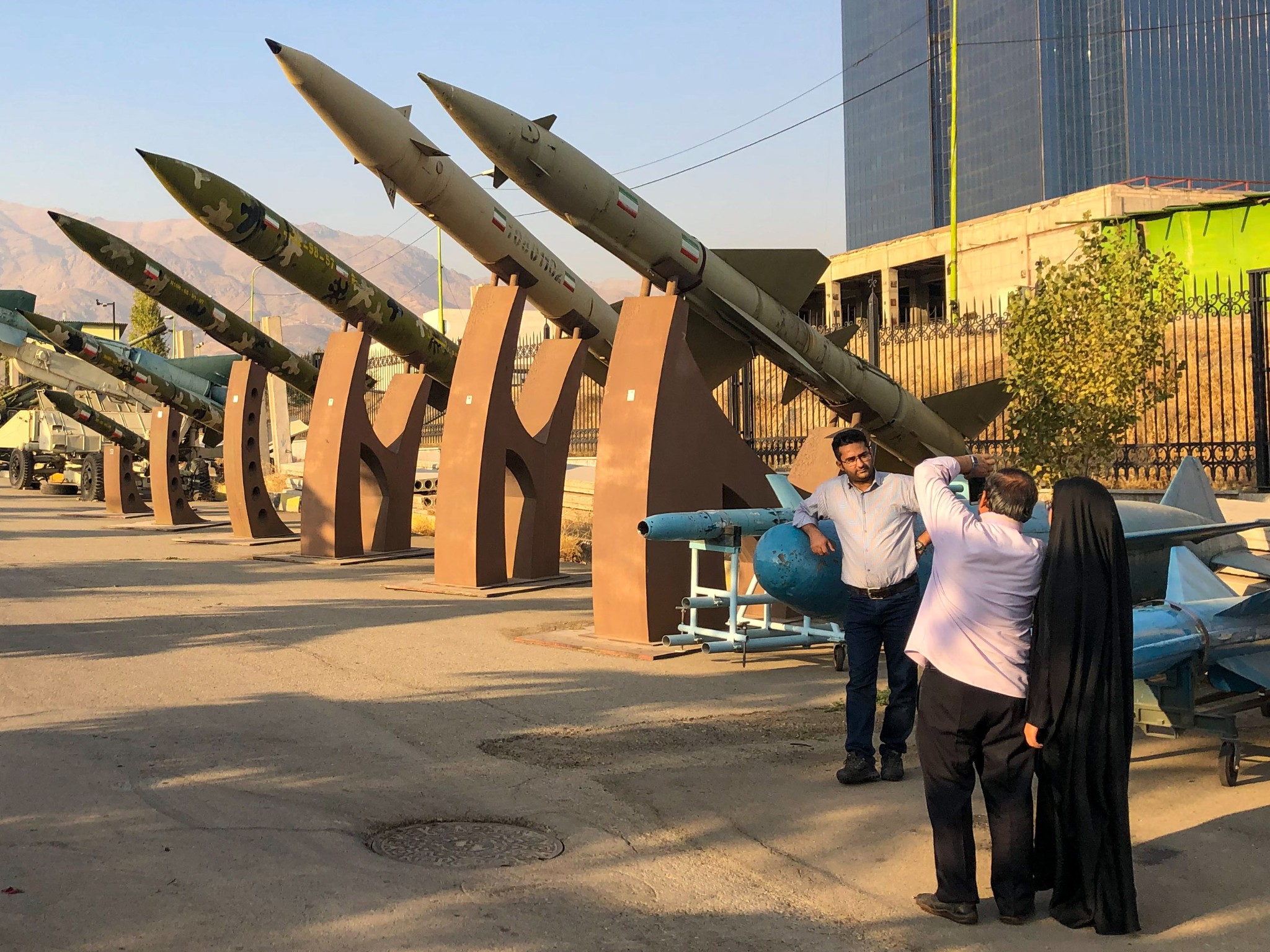 Iranian Missiles on Display | Image: Cyprien Hauser/Flickr
Iranian Missiles on Display | Image: Cyprien Hauser/Flickr
Iran’s Attacks in the Middle East: Ideological or Practical?
Last Tuesday, the Iranian government launched a series of missile strikes against what it called “terrorist hideouts” in Iraq, Syria, and Pakistan. In response, Pakistan “strongly [condemned] the unprovoked violation of its airspace” and launched retaliatory attacks, inciting the most high-profile cross-border exchange between the two states in recent history. Why is Iran provoking its neighbors and creating new conflicts in a region already plagued by violence? Is this a strategy to intimidate Israel in its war against Hamas? Or an opportunity to gain new resources and territory while Iran’s enemies, especially the U.S., are distracted?
The answer lies in Iran’s politico-religious ideology and its translation into practical foreign policy. Iran’s ideology is based on “[liberating] Iranians from the evils of Western imperialism” and exporting its version of political Islam. With these goals, Iran has been funding various extremist groups throughout the Middle East over the past 40 years to establish an “axis of resistance.” Though it’s difficult to pinpoint the exact amount of direct control Iran exercises over its proxy network, they all share anti-western and anti-imperialist aims.
According to the Iranian government, Tuesday’s attacks were necessary to protect its national security. Nasser Kanaani, the spokesman for Iran’s Ministry of Foreign Affairs, claimed that the attack on Erbil, the capital of Iraqi Kurdistan, targeted a Mossad-affiliated intelligence center there. However, the Iraqi Prime Minister rejected the claim that the site was an Israeli spy-hub. Similarly, the attack on Idlib in Syria was ostensibly targeting “terrorist-affiliated headquarters.” Iran’s attack on Pakistan targeted separatist groups from overlapping Balochistan.
Anti-Western ideology, however, is not the only reason for the recent cross-border attacks. Middle East expert Fabian Hinz suggests that another motivation for Iran is the opportunity to show off its new ballistic weapons technology. In its longest-range attack, Iran used the Kheibar Shekan missile system, unveiled in 2022. Iran already provides similar weapons to its proxy network and to Russia. These recent attacks could be an attempt to increase its customer base and provide a demonstration of the effectiveness of its missiles to their enemies and allies.
Another practical motivation is demonstrating strength to Iran’s domestic populace. Since the revolution in 1979, Iran has been an autocratic theocracy that has limited political and social freedoms, especially for women. The state ideology of fear and mistrust of the rest of the world allows the government to exercise this level of control, despite some degree of dissent. The perception of iron-fisted Iranian government control over its border and population has helped secure its revolutionary regime over the last four decades, however terrorist attacks by ISIS and the Balochi militant group Jaish al-Adl have jeopardized this perception. Tehran might be right in claiming its attacks were motivated by national security, but only insofar as they allowed the government to appear to be acting to protect the populace.
Iran and its proxies may also be attempting to take advantage of the United States’ preoccupation with the ongoing conflicts in Gaza and Ukraine to pursue local aims, assuming that these other conflicts will spread the U.S. and its allies too thin to take decisive action. Encouraging its proxies and strengthening its relationship with Russia while the U.S. and its partners are hesitant to open another war front is a strategic move, one that might have faced large-scale retaliation in previous years. Given the U.S. involvement in Ukraine and the Pacific, Iran’s orchestration of several conflicts through its proxy network means that the U.S. is less able to respond to Iran’s other regional goals. The U.S. has attempted to put out the fires Iran created in Gaza and Yemen with the Biden administration forming a new maritime security coalition with the UK, dubbed Operation Prosperity Guardian, that has struck over 60 targets at 16 sites in Yemen since January 11.
Because the revolutionary ideology of Iran overshadows its practical goals in the Middle East, policymakers are likely to misunderstand the reasoning behind these attacks. Using the distraction of Ukraine and Israel, as well as the turmoil caused by its proxies, Iran is well situated to pursue its broader foreign policy goals by overwhelming its adversaries with chaos. This chaos reduces the capacity of the U.S. and its allies to respond as Iran attempts to cement its regional hegemony and protect its general security. These are not new goals for Iran, but the establishment of Iranian regional dominance would be catastrophic for peace in the Middle East.
Image Credit: Cyprien Hauser from Flickr, CC BY-ND 2.0 DEED





